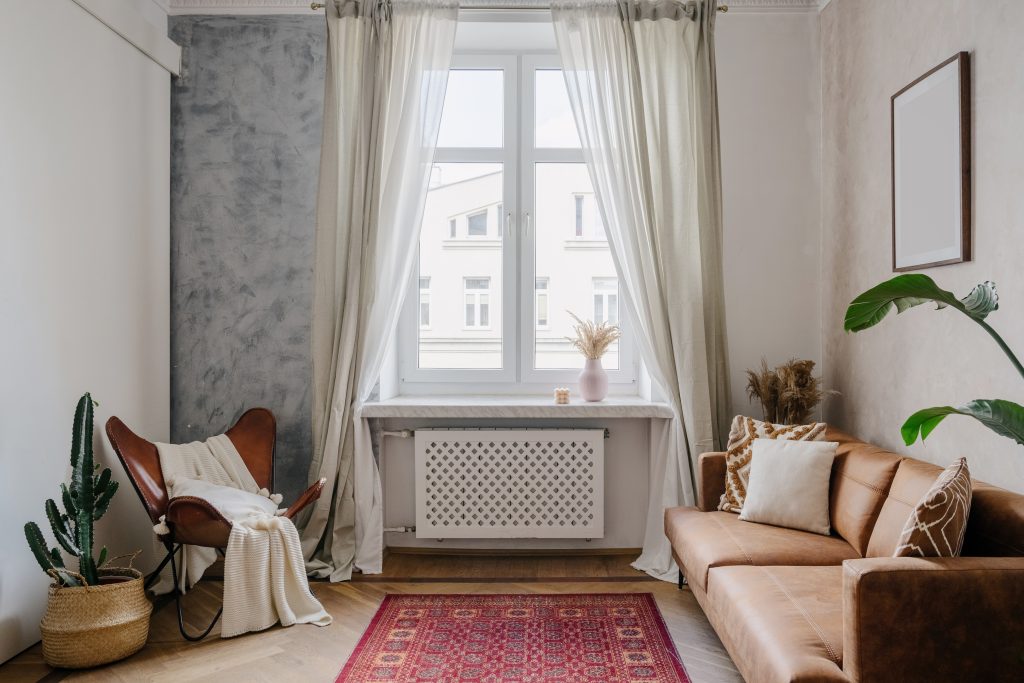A radiator that blends into each room of a property can improve a house or flat’s overall aesthetic and potentially be the factor that convinces a prospective buyer.
With so many options available such as vertical, horizontal, modern, and retro radiators; it can be difficult to confidently make an informed decision on what would best suit a given property.
This guide will walk you through the options, outlining the perfect radiator for various spaces in terms of both style and heat capabilities.
Room Size and Heat Output:
The first step in choosing a radiator is calculating the required heat output that you’ll need. This goes for every room in a property.
Heat output is measured in British Thermal Units (BTUs). Larger rooms, or rooms with poor insulation, will need radiators with a higher BTU rating to maintain a comfortable temperature.
You can use an online BTU calculator to get an accurate estimate based on room dimensions.
Matching Radiator Types to Rooms:
While there are several factors to consider, such as the height of the roof in a home or the style in which a home is decorated, here’s some direction for choosing a radiator for a new development:
Living Rooms and Lounges
Most people will spend the bulk of their time in a lounge area of a home, which is why designer radiators are a great choice. There are various shapes and finishes which can offer a sleek, modern touch to your décor. If you are interested in the designer look, here’s more information from the Latest Trends in Designer Radiators.
Despite the emphasis on design, these radiators can still provide a great output.
Vertical designer radiators can be effective in smaller living rooms, freeing up wall space for furniture and decorations.
Bedrooms
Double panel radiators are known for their efficient heat distribution, and are ideal in bedrooms.
In the UK, where winters can get particularly cold, a high quality and reliable radiator can be an excellent selling point for buyers.
Kitchens
In kitchens, where wall space might be limited due to cabinets and appliances, compact radiators can be very practical.
They can also be surprisingly powerful, with high BTU outputs for open space kitchens.
Bathrooms
Bathrooms require radiators that resist humidity. There are towel warmers that are specifically designed for this purpose.
These radiators are popular choices, as they can heat the room and also keep the towels dry and toasty.
Look for stainless steel or chrome finishes that withstand damp conditions.
Hallways and Entrances:
These areas often need less heating than other rooms but it’s still worth finding stylish and reliable heating without obstructing pathways.
This can help give off a great first impression in new developments. If you’re looking for something that can stand out, consider a cast-iron radiator.
Style and Aesthetics:
The aesthetics of your radiator can significantly affect the look of your room. Here are some tips to ensure your radiator complements your interior design.
Colour and Finish: Modern radiators are available in a variety of colours and finishes. The colour you choose should blend well with your wall.
Glossy finishes can add a touch of sophistication, while matte finishes offer a subtle, modern look. If you are interested in the modern look, there’s more information from this Integrating Radiators into Modern Home Design blog.
Shape and Design: When choosing your radiator’s shape and design you should consider the overall theme of your room and choose a design that enhances it.
For instance, ornate cast iron radiators can add a classic touch to period homes, while minimalist designs suit contemporary space.
Installation and Placement:
Proper installation is key to maximising the efficiency and effectiveness of your radiator. Positioning your radiator on the wall under windows is the optimal location for most rooms.
This setup is excellent because it helps counteract cold air coming through the glass and promotes better heat circulation. In bathrooms, place towel radiators near showers or bathtubs for convenient access.
Choose the Perfect Radiator:
The perfect radiator may require a lot of consideration, but we hope this blog made the decision a little easier for you.


